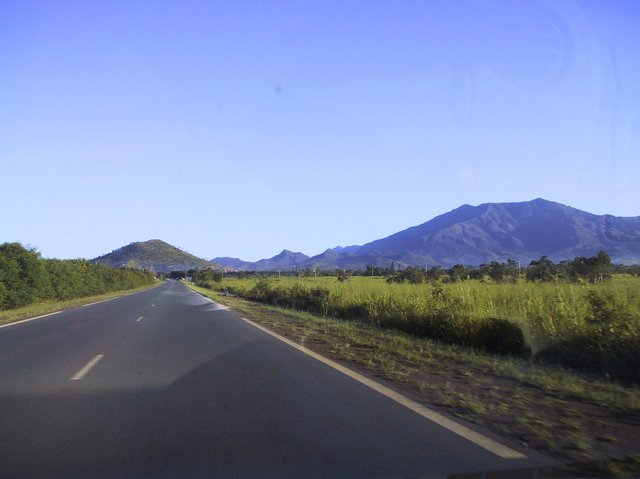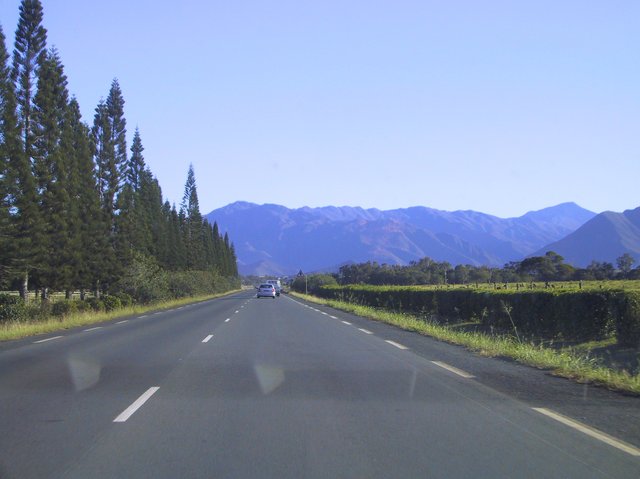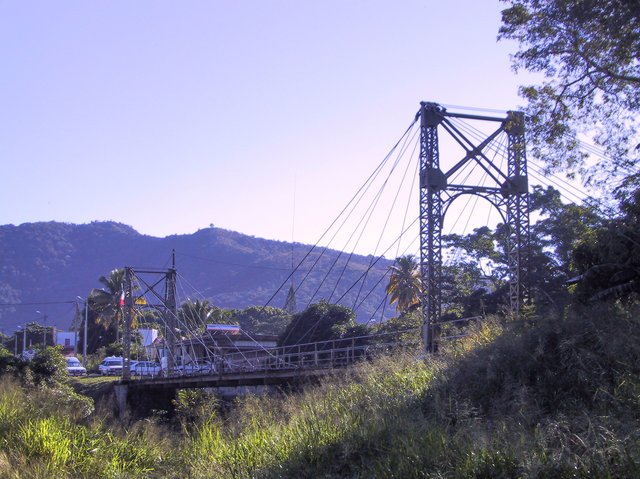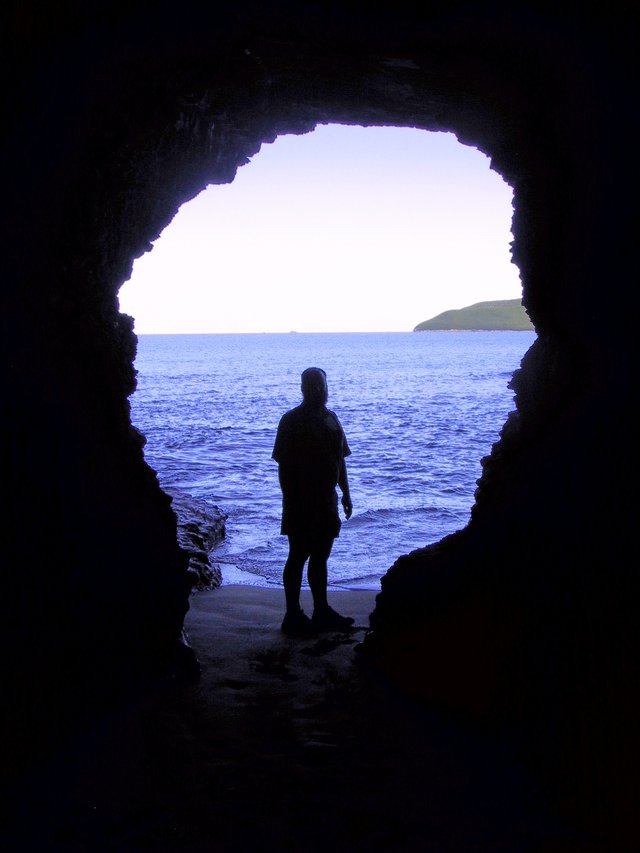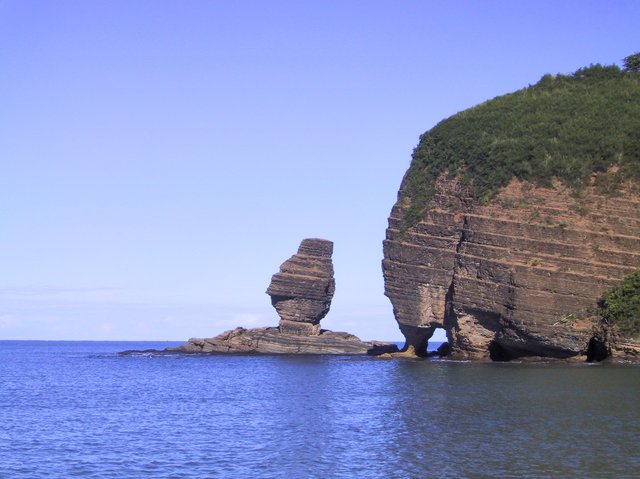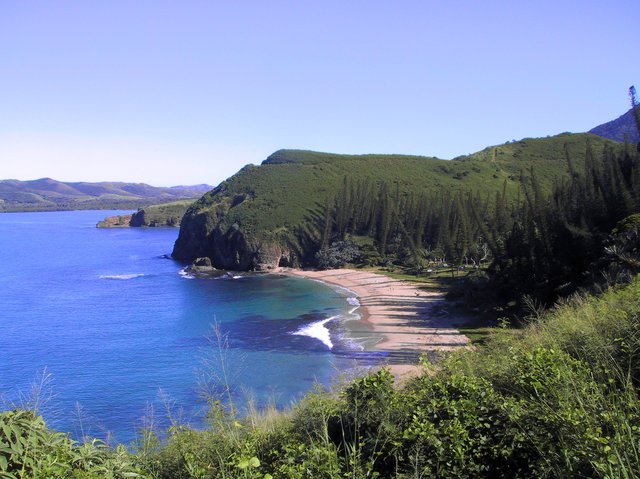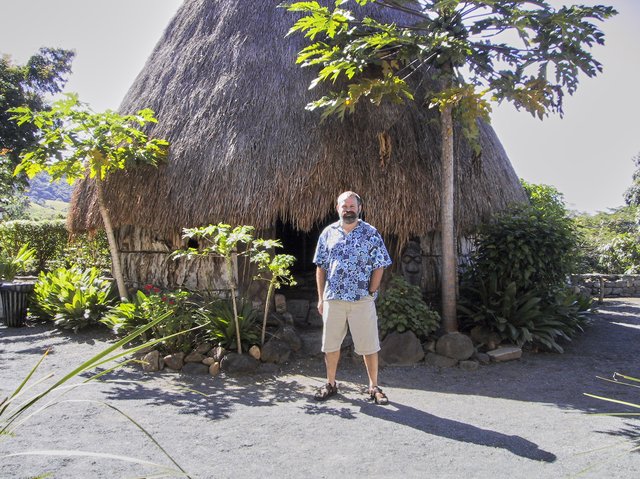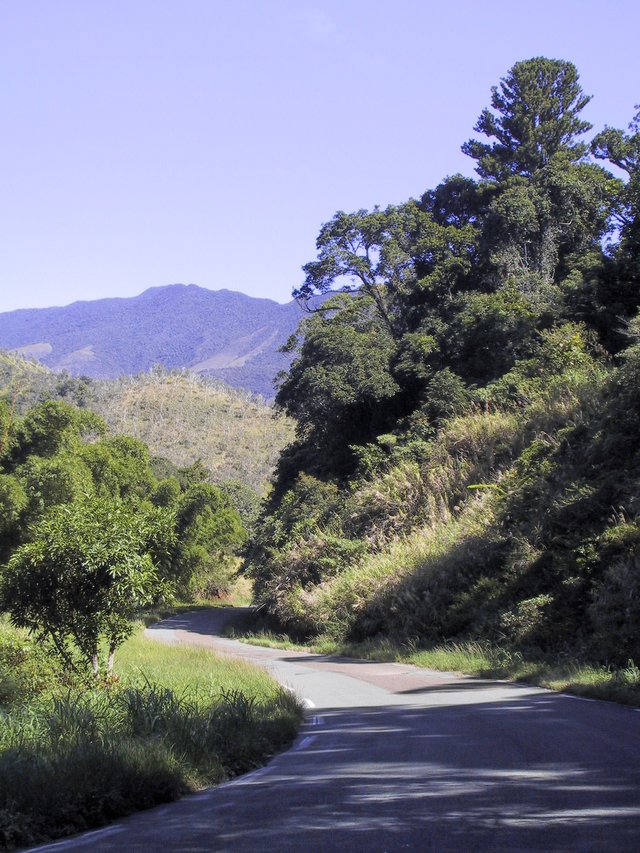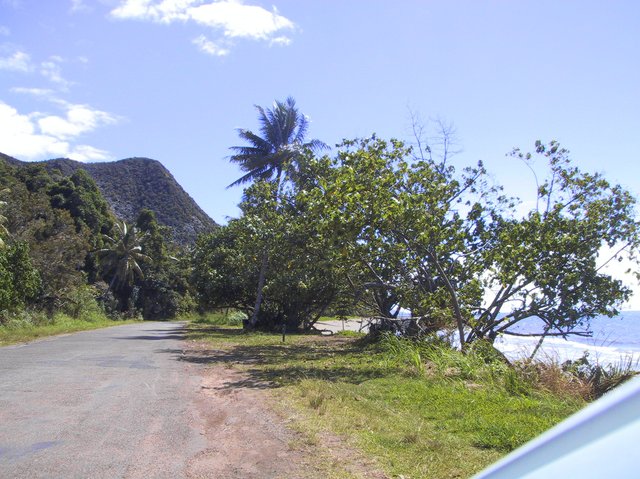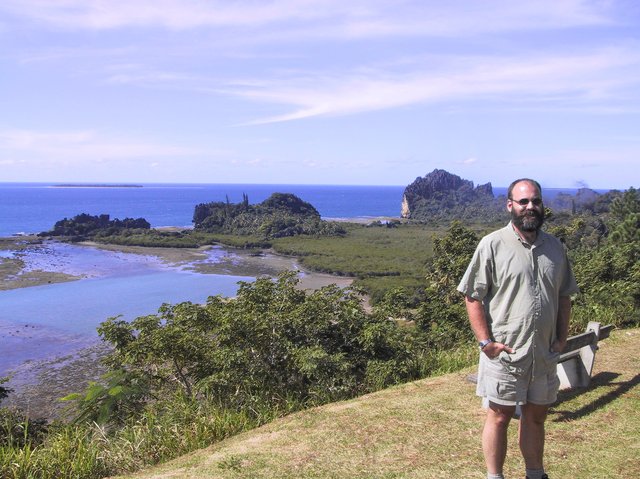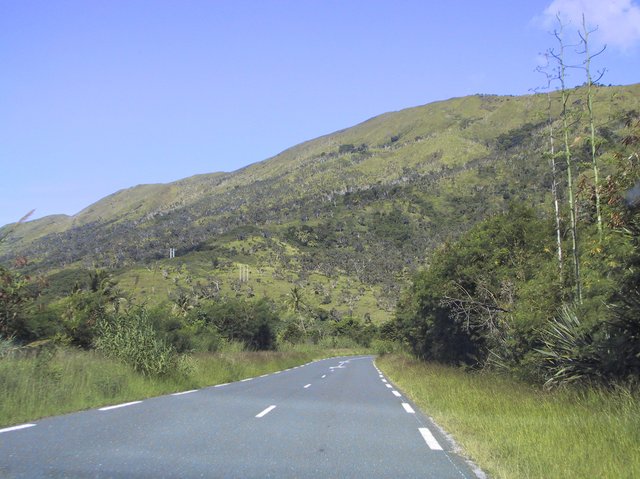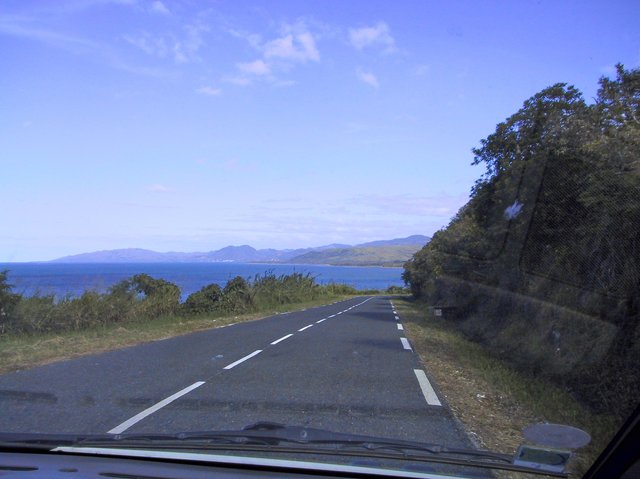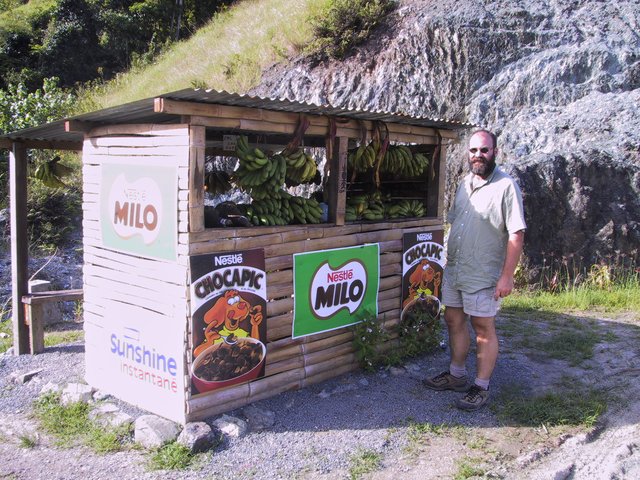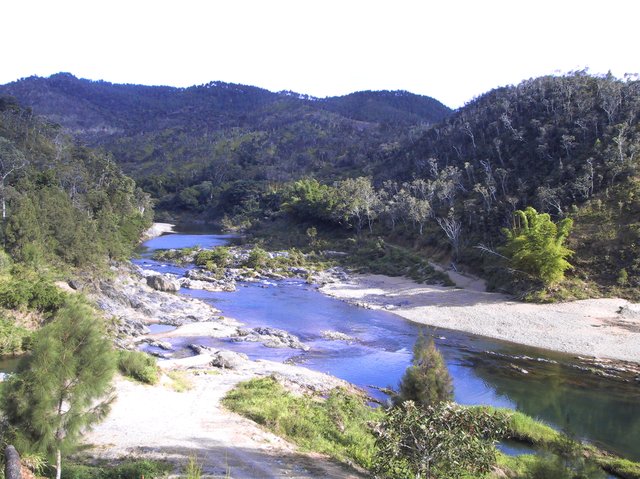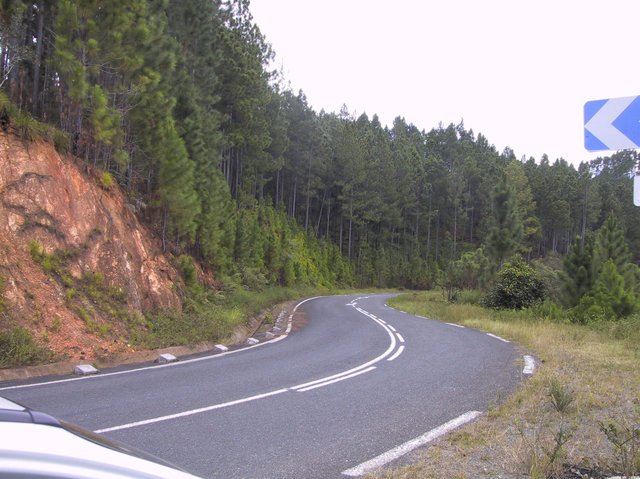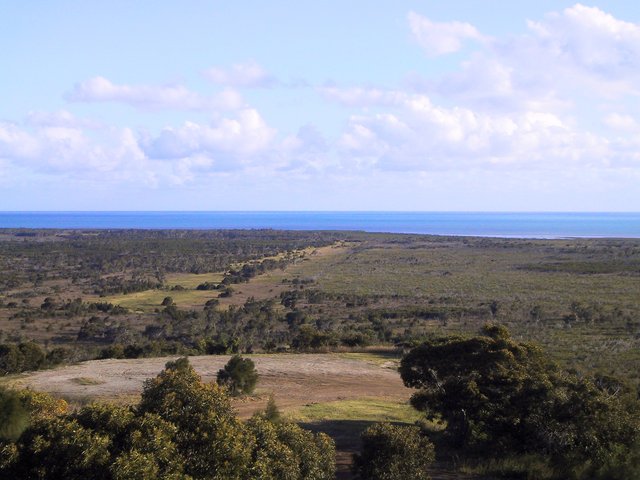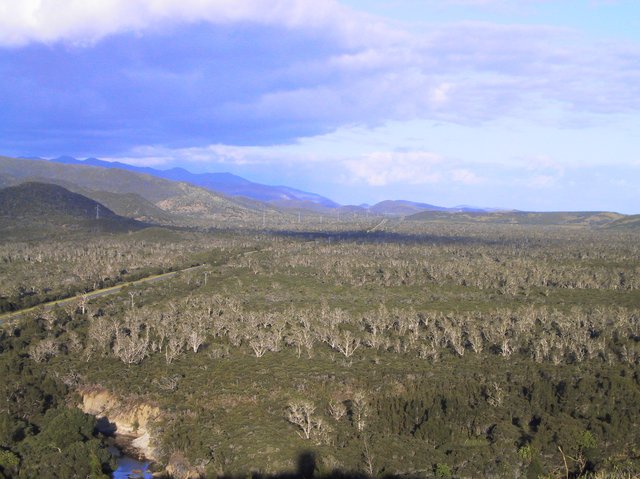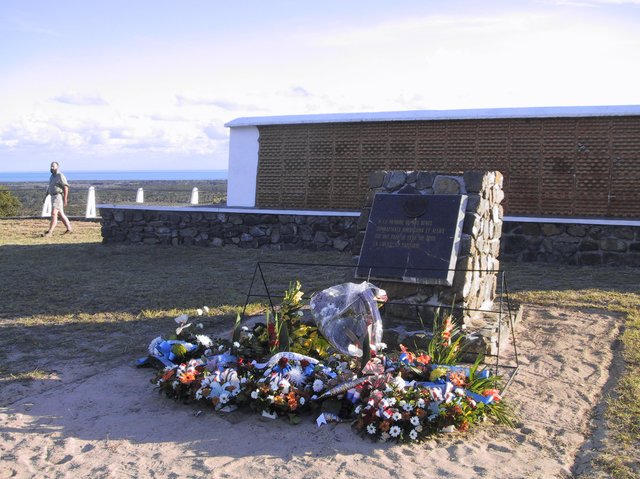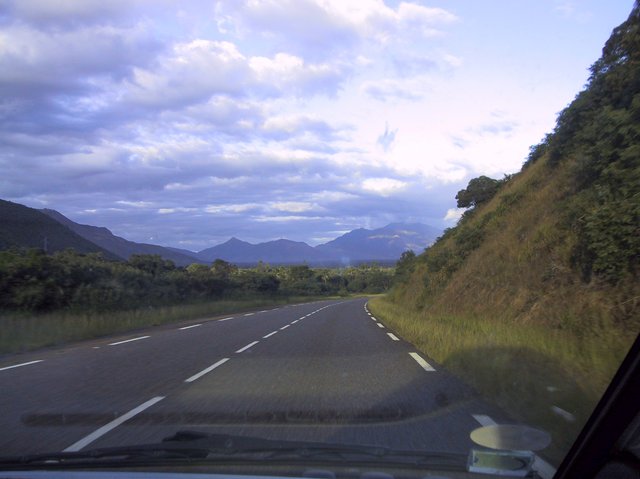Today we took our little Renault Twingo all around the island, seeing what strange attractions are in the west and northeast of New Caledonia. While we found some interesting things, such as strange black cliffs near Hienghène, cute roadside fruit stands, and an old World War II US air base, we found most of the scenery simply pleasant rather than wonderful--and not as weird and fascinating as the landscapes east and south of Nouméa.
Starting early, we gobbled down a quick breakfast and headed north along the western side of the island. The landscape was primarily flat to rolling, with the island's mountainous backbone rising abruptly to the east. Most of the first couple of hours to Bourail were uneventful, though we did stop in La Foa and gaze at a bridge built by students of Eiffel, and for a bit at Pierced Rock just south of Bourail.
Bourail itself--the island's second largest city--is tiny, with just a single main street lined with shops. After getting fuel, we headed east over the mountains on a windy road, climbing into greener country with lots of vines and bananas. We started to see the first roadside fruit stands--simple affairs with a shelf and a honesty box for you to pay up. A couple of hours later, we were on the east coast.
Surprisingly, I was under the impression that the eastern side of the island would be very green and overgrown, much as the windward side of most Hawaiian islands are. But it wasn't, except just along the beach: the hillsides above were covered in tea tree (melaleuca) woodlands. Sure, it looks like the South Pacific--as long as you don't look up from the coconut palms and hibiscus along the beach!
The people certainly had changed along the east coast, though: no more Europeans. Everyone was Kanak, and this being Sunday there were some folks in Sunday dress, but many more in just the singlet/shorts/thongs outfit, sitting under trees just hanging out, having a picnic. Almost everyone waved to us as we went by... we were just about the only car on the road.
We were getting hungry, so we stopped at the sad and lonely Club Med just outside of Hienghène. I thought all Club Med's were lush extravagant affairs, but this one was just not that expansive--a few beach huts and a central room. We were thinking about eating lunch there, but couldn't figure out their buffet prices. The people at the restaurant couldn't speak English (a surprise at Club Med), so they wrote down prices and spoke French. We understood what they were saying, but it didn't make sense: 2400XPF for cold buffet, 3400 for everything, 2800 for hot and cold buffet, and another option for salad and cold buffet. Fine--but it wasn't obvious what went with what by looking at the food tables. Plus, we just didn't feel like paying 2400XPF (US$18.32) for cold buffet.
We had seen some curious black monolith cliffs surrounding the Club Med, and snapped a few pictures as we headed north towards Hienghène. We still weren't sure which road we'd take--do we take the longer, dirt road along the cliffs of the east coast, or the road over the mountains to the west? The mountains and cliffs did look kind of interesting, but it was warm and humid and honestly I just felt like going back and having a beer. So we drove across on a fairly fancy new road, stopping at a few overlooks here and there.
One surprising thing I found as we drove west were the pine trees that started appearing. They looked liked radiata (or Monterey pine) to me, but I wasn't sure--after all, New Caledonia is in the tropics, and the climate is not at all like Monterey, California. They also had a curious growth pattern: some trees just sent up these amazing long trunk leaders, maybe 5m long or more, densely cloaked with needles. Very strange.
We came down to Koné, and then got on the really fast road to Bouparis. The Lonely Planet book said there was a war memorial, unsigned, about 16km south of Pouembout, so we drove up to the hilltop and looked. It was an old, 1950's concrete style memorial to World War II Allied forces, who used the airfield on the plains below as their main air base for the battle of Guadalcanal. With Anzac day three days before, there were a dozen floral arrangements placed at the memorial. It was very lonely place--you still can see the outlines of the airstrip and the support base some 60 years later. There's absolutely nothing around there, either, not even cattle ranches. Just uncleared melaleuca woodlands.
Quickly driving back, we briefly stopped at the Commonwealth War Cemetery as dusk came upon us, a quiet, contemplative place where some 200 New Zealanders are buried. We then headed back to the hotel and bed.
